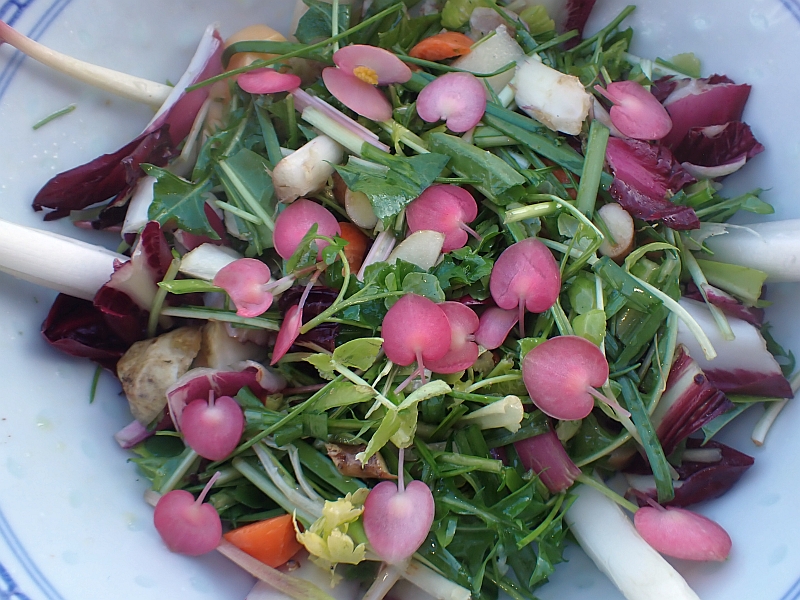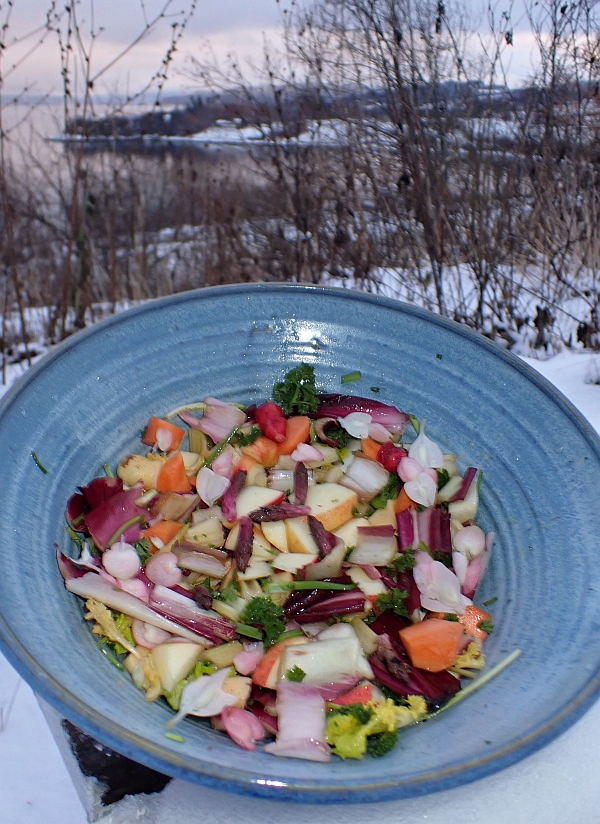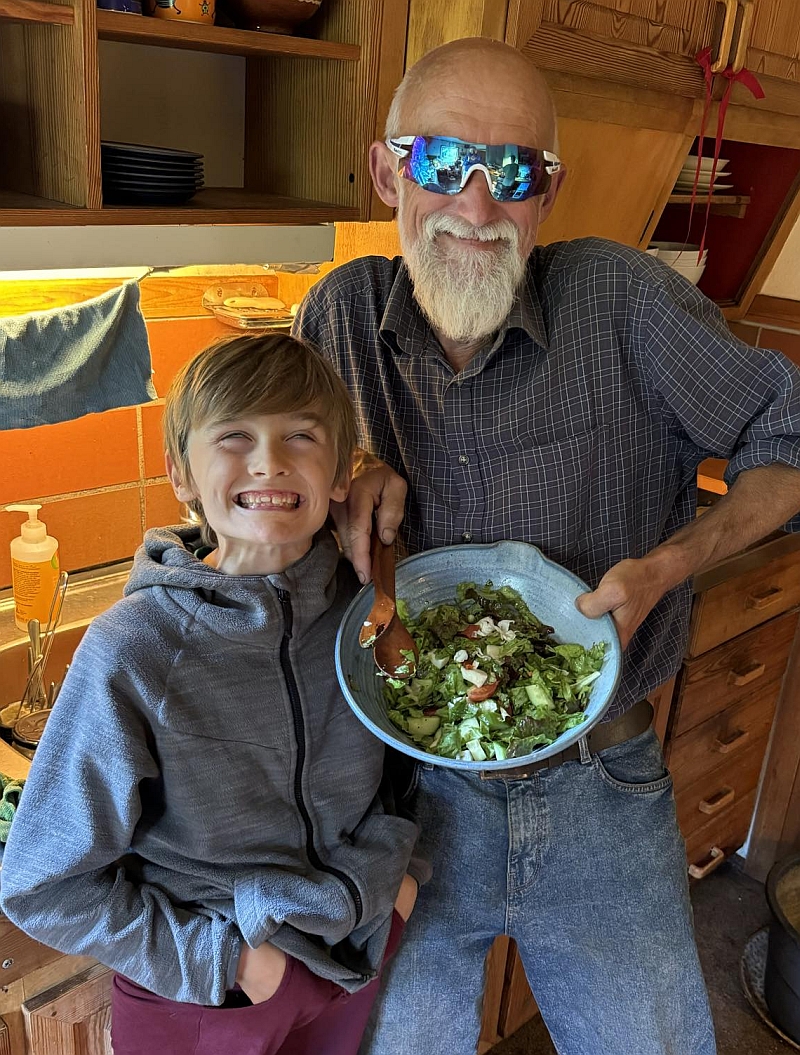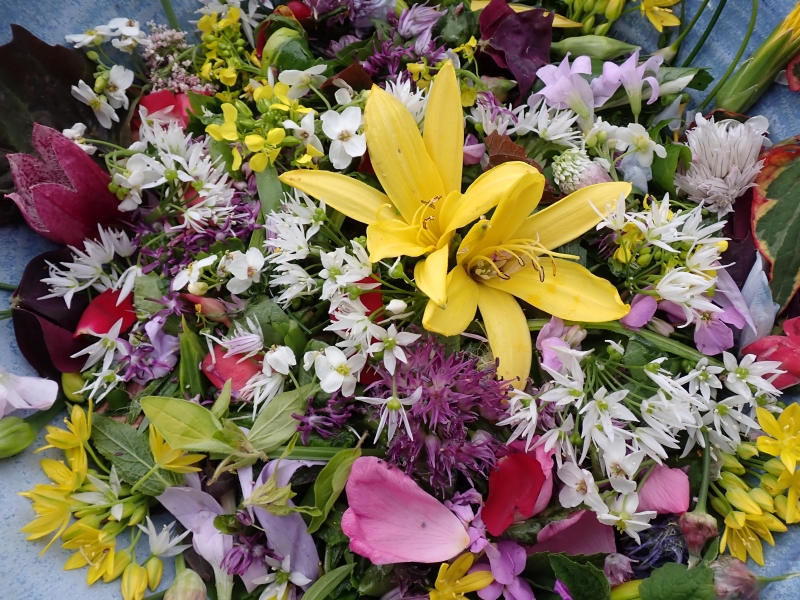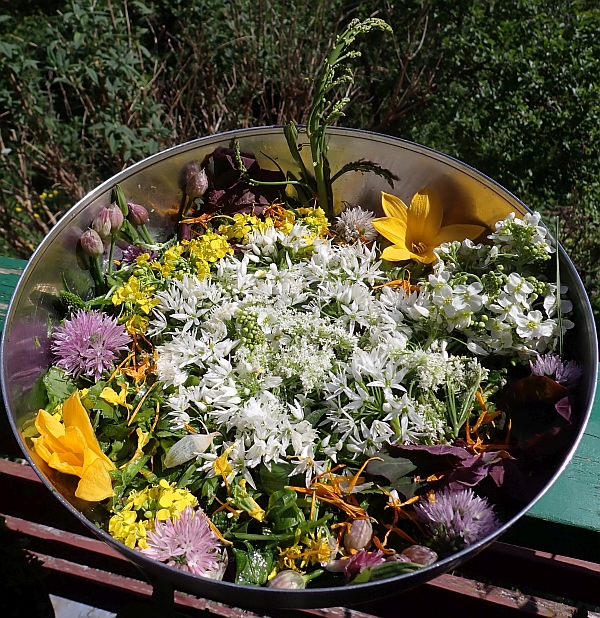The year’s first multispecies salad made earlier this week on 12th April! The list of plants is below the pictures.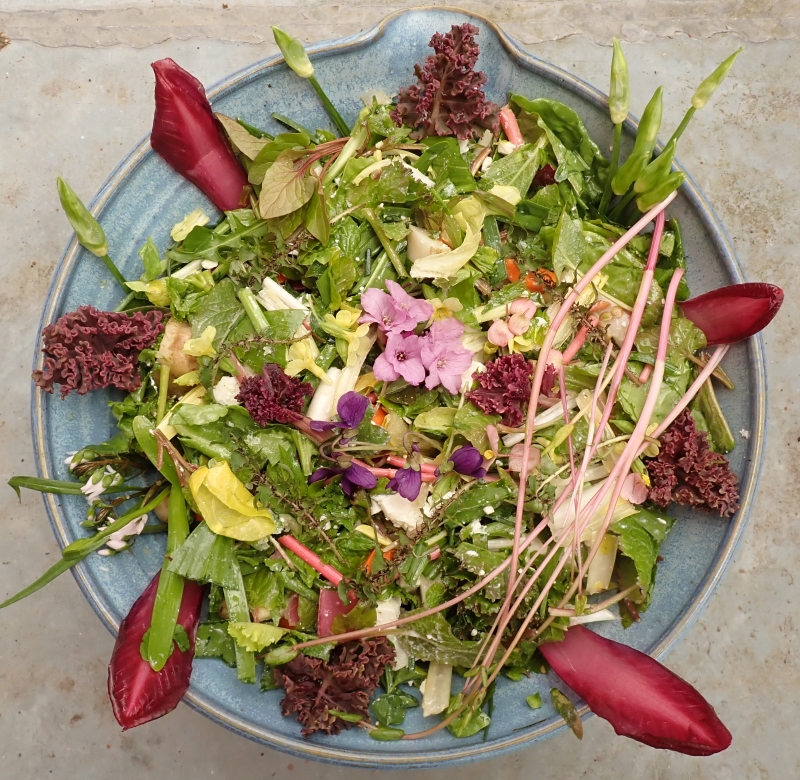
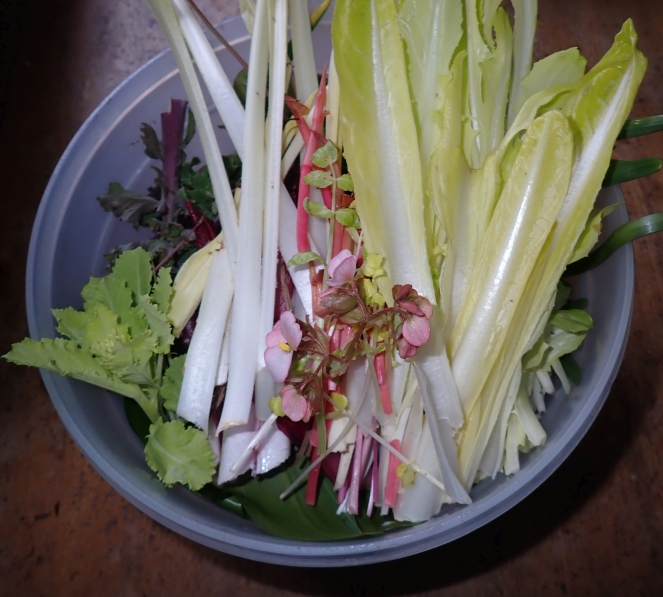

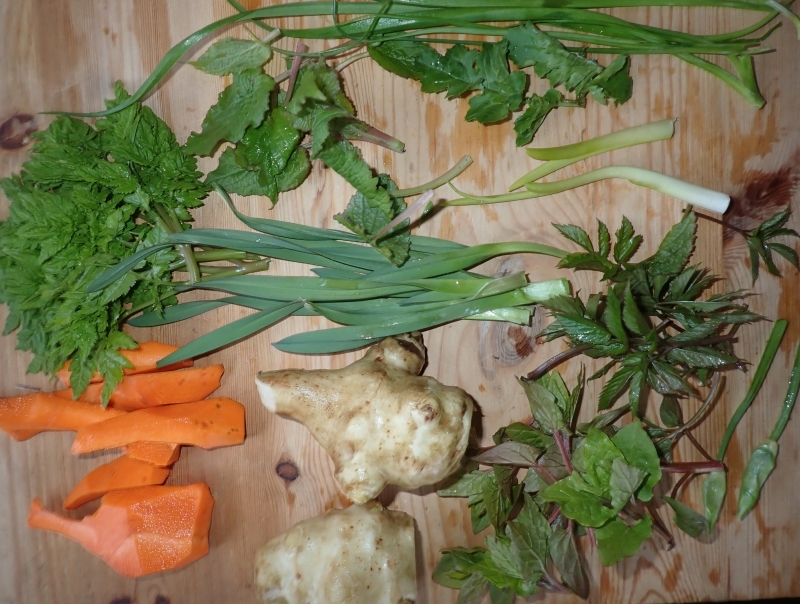

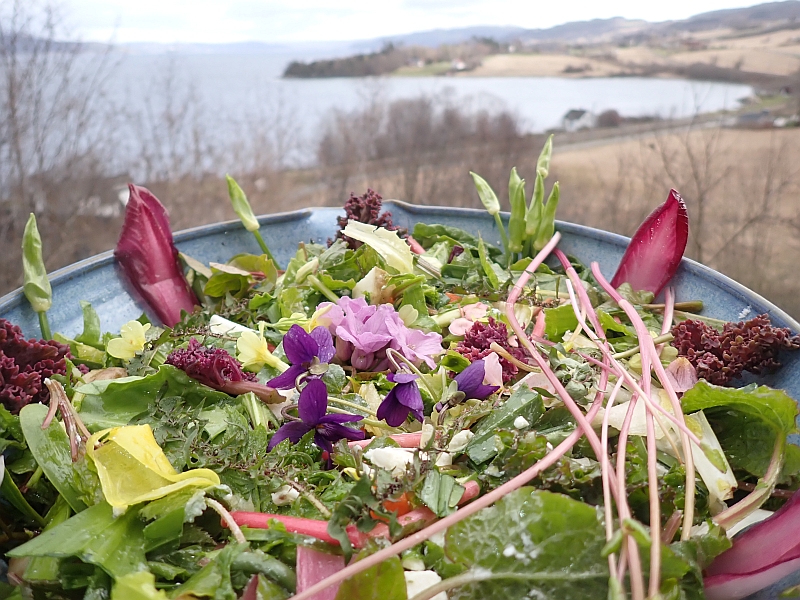
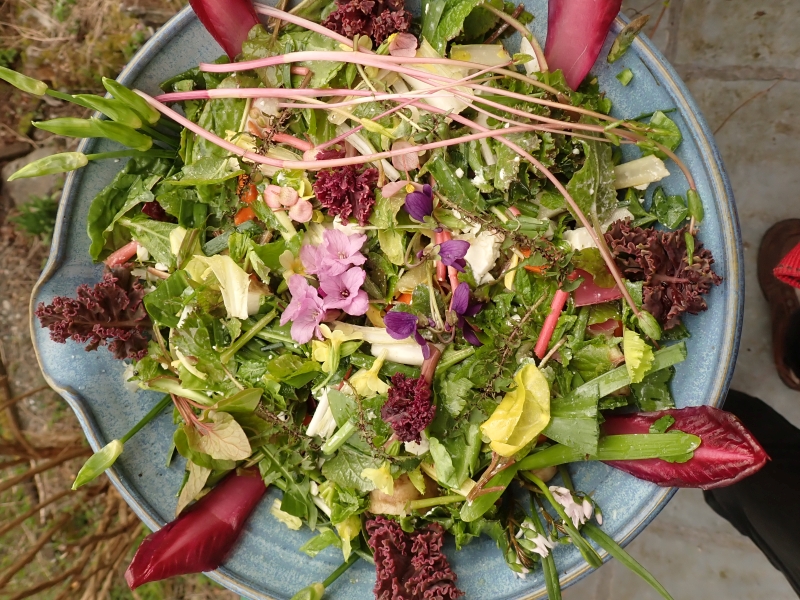
 The ingredients:
The ingredients:
Rumex patientia (patience dock / hagesyre)
Rumex acetosa “Abundance”(sorrel /engsyre)
Dystaenia takesimana (Ulleung perennial celery)
Allium paradoxum var normale (flower shoots and buds)
Allium paradoxum var paradoxum (flower shoots and buds)
Allium hymenorhizum
Claytonia virginica (spring beauty; flowers and leaves)
Cardamine pentaphyllos (flowers)
Crambe maritima (sea kale / strandkål)
Artemisia dracunculus “German tarragon” (tysk estragon)
Cichorium intybus “Perennial mix” (chicory / sikori)
Cichorium intybus “Red Treviso” (chicory / sikori)
Brassica oleracea (3 varieties of perennial kale which have overwintered well)
Alliaria petiolata (hedge garlic / løkurt)
Viola odorata (flowers)
Scorzonera hispanica shoots (blanched in the dark cellar)
Nasturtium officinale (watercress)
Allium sativum (garlic shoots and bulbs)
Sedum sp.
Houttuynia cordata (Himalayan water creeper)
Begonia heracleifolia var nigricans (flowers)
Sium sisarum (long shoots from the cellar) (skirret / sukkerrot)
Taraxacum sp. (wild dandelion)
Primula elatior (flowers) (oxlip / hagenøkleblom)
Taraxacum tortilobum (moss-leaved dandelion)
Allium cernuum (nodding onion / prærieløk)
Angelica archangelica “Voss”
Apium nodiflorum (fool’s watercress)
Allium victorialis (victory onion / seiersløk)
Daucus carota (carrot / gulrot)
Helianthus tuberosus (Jerusalem artichoke / jordskokk)
Campanula latifolia (giant bellflower / storklokke)
Allium scorodoprasum (sand leek / bendelløk)
Cirsium sp.
Aegopodium podograria (ground elder / skvallerkål)
Allium nutans
Hablitzia tamnoides (Caucasian spinach / stjernemelde)
Allium oleraceum (wild onion / villøk)









